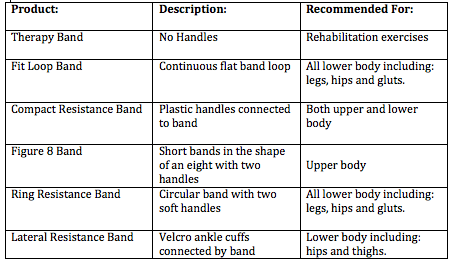Strength training for most people consists solely of free weights, cables, or machines at the gym. If you’re looking for a new challenge or to shake things up a bit, resistance bands are a great addition to any strength training routine. Similar to free weights, resistance bands come in a variety of sizes, lengths, and levels from easily stretchable to heavy-duty strength. Resistance bands are a great equipment to have because they are inexpensive and easily portable.
Resistances band will provide a different workout than dumbbells because they are not based on gravity. With band training, you may feel that your muscles are working harder. Similar to cable machines, the farther away you stretch the band from its anchor point, the more challenge and muscle engaging it becomes to hold.

What are Resistance Bands Used for?
Resistance bands are versatile and great for all fitness levels. They’re great for beginners or to add intensity to more traditional, basic moves. With dumbbells you are limited in your exercises but resistance bands can be used in multiple ways to change how your body works and how an exercise feels. Resistance bands also increase coordination and balance by forcing muscle groups to help stabilize your body during exercises. Resistance bands are also commonly used during rehabilitation and physical therapy.
Tips for Buying Resistance Bands
- Most resistance bands are color-coded according to strength level. Typically the lighter the color of the band, the lighter the tension level. It’s best to buy a few bands in a variety of resistance levels.
- Keep it simple. While there are a variety of bands available (see chart below), you may want to start with a basic compact resistance band until you get used to it.
Types of Resistance Bands:



